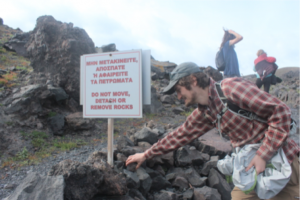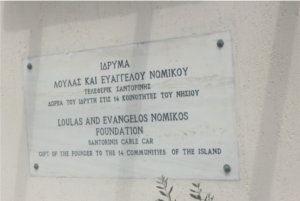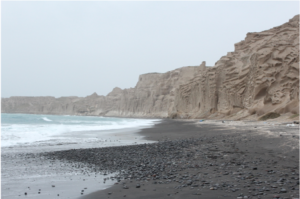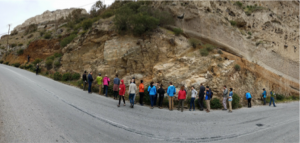Day three in Santorini was a full day of activities and sights. We had our breakfast of Greek yoghurt, bread, and coffee before heading out for the day.
We had planned on taking the cable car down to the harbor, but upon arrival, the gates were closed. We instead took the 587 step staircase down to the harbor, dodging donkey feces the entire way down.
The staircase from Fira to the harbor, as viewed from the boat. We took the boat from the harbor to Nea Kameni, roughly a 20 minute ride.
View of Nea Kameni from the boat.
Never trust a geologist with interesting rocks.
Learning about Nea Kameni’s 9 sub-aerial dacitic lava flows, spanning from 197 BC to 1950.
In the foreground is Nea Kameni’s 1925 Daphni Crater, in the back is the 1940-1941 Niki Dome. Note the difference ten years has on the vegetation.
Georgios Crater, erupted in 1886. The fumaroles are still active, smelling slightly of sulfur, and rich in CO2. Also, in the background is Nea Palea’s highest point.
The group is learning about Palea Kameni (old volcano). There were two lava flows that formed that island, the first in 46 AD and the second in 726 AD. The harbor has a hot spring in it that the tourists love to swim in. Aspronisi is in the background, part of the old caldera wall.
Dacite in foreground is the youngest land in Europe, from the Liatsikas eruption of 1950. The peak in the background is Mt. Profitis Ilias, the oldest exposed stone in Santorini.
A few of the 63 andesitic/dacitic dikes that penetrate the old Peristeria volcano in the caldera wall. Viewed from the boat.
After disembarking, most of us caught cable cars back to Fira. Some people missed the cable cars though, giving everyone else a well deserved break as we waited for them to arrive.
After we left the hotel a second time, we went to visit the industrial tomato factory. The photo is of the tomato paste boiler. First the tomatoes are picked, then de-leaved, pressed and crushed, boiled, then canned. This factory suffered from flooding in 1952, and from the very large earthquake in 1956.
After the Tomato Factory, we all went to the beach from the day before, to look at phase three and four of the late bronze age eruption.
After that we drove down a road to Athinios harbor, stopping to look (and collect) some low grade metamorphic rocks (blue schist).
Along the same road, we stopped (in the middle of the road), to look at the contact between the basement rocks and the volcanic material and paleosols that were deposited on top of the basement.
The last stop of the day was to see en-echelon quartz and metamorphosed conglomerate at the base of the cliffs.
-Eamonn and Will















